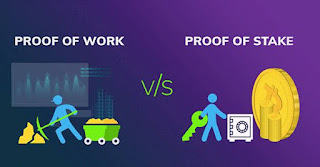Introducing Serenity: What you need to know
In late 2013, Vitalik Buterin described Ethereum in a white paper. On 30th July 2015, Ethereum (ETH 1.0) was formally launched with the code name "Frontier"
Since then, it has seen many minor upgrades with different code names, the latest being "London" on the 5th of August 2021.
However, we have seen some shortcomings in the ETH 1.0 which include the issues of flawed security, inability to scale, and high cost of gas fees. Vitalik and his team needed to address that, homosapiens are insatiable creatures.
There was a need for a better version, a major upgrade.
ETH 2.0
24 days before Christmas in 2020, Ethereum released the first phase (Phase 0) of its major upgrade known as the ETH 2.0 or "Serenity".
This Phase 0 ushered in the Beacon chain which is described as a new, proof of stake blockchain that will be the foundation for Serenity. There will be a total of three phases.
Why the need for ETH 2.0?
As I said, homosapiens can't get enough. And also there was a need for an ETH that would possess increased scalability, be more efficient, and would probably address the high cost of gas fees (this alone gives coins like bitcoin an edge over it).
In the ETH 2.0, there would be a switch in the consensus mechanism from the traditional Proof of Work to the Proof of Stake mechanism. Let's go!
How it works
To briefly understand how Ethereum 2.0 will work, let's take a look at its new features.
Sharding: In order to solve the problem of low throughput rate and reduced scalability, Serenity will make use of a process known as Sharding.
This will involve breaking the network into what is known as shards or delegating specific duties on the blockchain to different nodes instead of all nodes having to do all duties.
The ETH 2.0 will see the Ethereum blockchain being broken down into 64 shards.
Surprisingly, this would not see much change in the security of the network but if not implemented well, nodes in charge of a particular shard could be corrected putting the network in harm's way.
PoS: Ethereum 2.0 will switch from the PoW system to the PoS system, miners will be replaced with validators. This will also see it use a consensus mechanism that requires less energy, making it environment-friendly.
Gas fees: Ethereum's current version can only handle a limited number of transactions at a time, the consequence of this is a rise in the amount of gas fees. The ETH 2.0 hopes to solve this issue through its increased throughput rate.
New token?: The ETH 2.0 won't be a new coin or a new token. Your current ETH will be transferable to the ETH 2.0
What does this mean for miners?
For miners in the Ethereum space, this would mean that they would be retired or will have to transition from mining to being a validator.
When it launches
There has been several adjustments in the launch dates for the next phase (Phase 1) of the ETH 2.0, the current date is set for August 2022. That of Phase 2 is set for 2023.
We hope the ETH 2.0 fulfills all its expectations, after that, then maybe then we will go for an ETH 3.0.
I am looking for a pie in the sky now, am I?... haha.
Please do subscribe to my blog to get notified when I release content like this.
Cheers.
DYOR!



Comments
Post a Comment